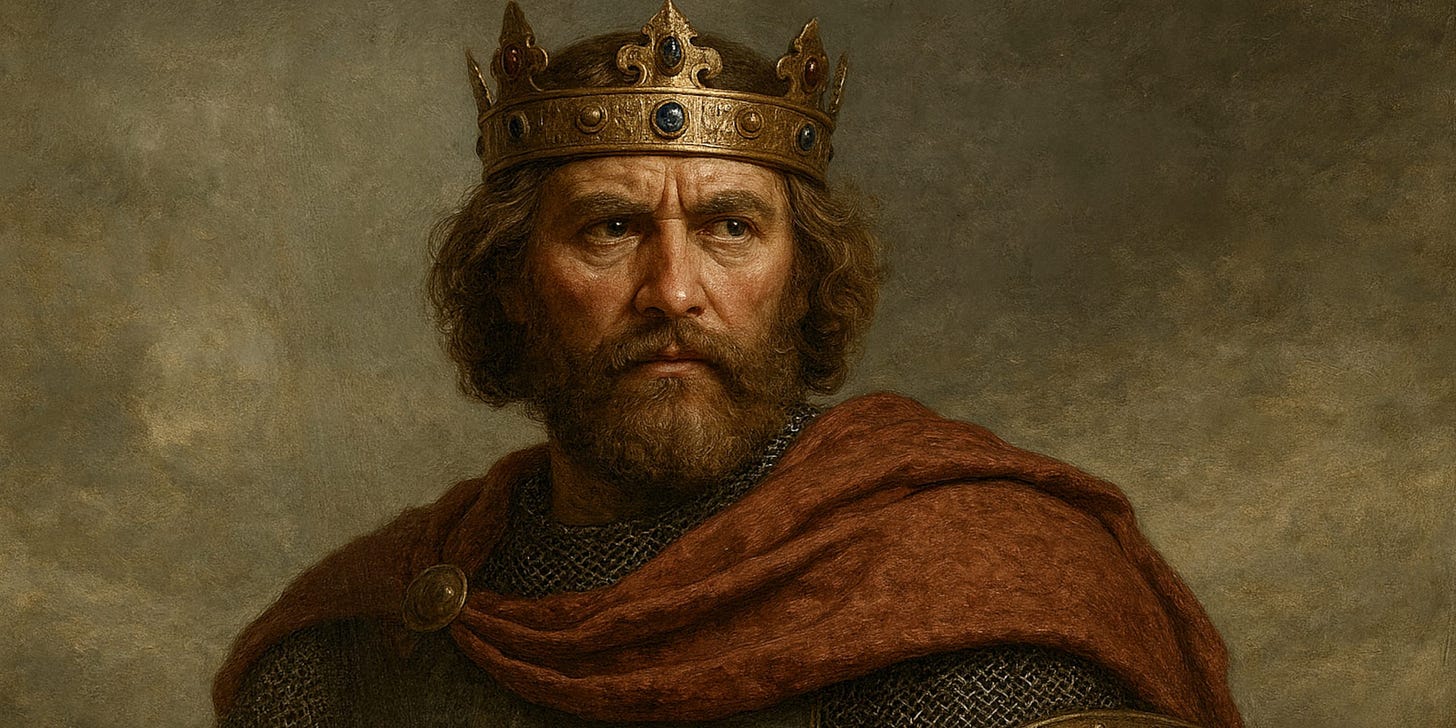On This Day in 963: Otto the Great Deposes a Pope and Redraws the Power Map of Europe
When church and crown collided in Rome, Otto did not just challenge authority, he redefined it and made sure the world knew who ruled Christian Europe.
The Emperor Who Sacked a Pope
On 6 November 963, a moment unfolded in Rome that would send shockwaves through Christian Europe. Otto the Great, already a hardened warrior and shrewd ruler, took an unprecedented step. He removed the sitting Pope from power. Not with secret deals or veiled threats, but in full view of the Roman clergy, noblemen, and his own army.
History has seen countless power plays between kings and popes. This was something else. This was the emperor walking into the heart of the church and making it his own.
Otto’s Rise Was Forged in Blood and Fire
Otto’s journey to becoming Holy Roman Emperor began with battle, not ceremony. On 10 August 955, near Augsburg, he led his troops into a muddy, arrow-laced warzone against Hungarian raiders. These incursions had plagued East Frankia for decades. Otto decided it would end that day. And it did.
He held aloft the holy lance, believed to have pierced Christ on the cross, and rallied his men to fight not just for land, but for Christendom itself. The result was a crushing victory. The Hungarians were not just defeated, they were executed. From that field of blood rose Otto the Great.
But power on the battlefield meant little without security at home. Otto understood that enemies wore crowns too. To lock down his legacy, he made his six-year-old son co-ruler. That might sound ceremonial, but it was a clear message to any noble plotting for the throne. The line of succession was no longer up for debate.
Rome Offered Glory, But Not Without Cost
In 961, Pope John XII, just 23 and already deep in political trouble, begged Otto for military help. The Pope promised Otto the title of Holy Roman Emperor in return. Otto agreed, but he came south with eyes wide open. Rome, once imperial and untouchable, was crumbling and chaotic. Its Pope was no saint either. Known more for excess and scandal than leadership or piety, John XII was everything Otto had fought against.
Still, Otto played along. He accepted the crown in 962, knelt before the Pope, and took a sacred oath to protect the church. The two men signed a decree that would shape the years to come. From that point on, no man could be pope without swearing loyalty to the emperor first.
This was no small clause. It gave Otto influence not just over Rome, but over the very seat of Christianity. But the ink had barely dried before John XII tried to wriggle free.
Betrayal Was Met With Precision
Otto honoured his side of the deal. He marched against the Pope’s enemies, laid siege to the fortress at San Leo, and endured brutal conditions to get results. But word came to his camp that the Pope had betrayed him. John XII, far from being grateful, had switched sides and conspired with Otto’s enemies to attack the emperor’s army from behind.
Otto’s response was not emotional. It was calculated. He split his forces, sent one half to continue the siege, and led the other half straight back to Rome. He expected resistance. What he found instead were open gates. The people of Rome had no interest in defending a Pope who had lost their respect.
John XII, true to character, fled the city after looting its sacred treasures. Otto, with cold clarity, refused to turn the episode into a public spectacle. Dragging a disgraced pope through the streets would harm the church more than it would help the empire. Otto chose a smarter path.
Otto’s Trial of a Pope Changed Europe Forever
Otto did something no ruler had ever done. He put a reigning Pope on trial. Not secretly or symbolically, but formally, in St Peter’s Basilica, in front of cardinals and bishops. John XII refused to return. He called the trial illegal, threatened excommunication, and cowered in exile. The charges levelled against him were not mild. Conspiracy. Blasphemy. Adultery.
The synod found him guilty. On 1 December 963, Pope John XII was deposed. Less than a week later, Otto installed his own candidate, Leo, as the new Pope. Leo was not even a priest when Otto picked him. That did not matter. Loyalty mattered. Integrity mattered. Otto was not looking for another power player. He wanted a spiritual leader who would not turn Rome into a playground.
By 6 December 963, Leo was ordained and enthroned. Otto had removed a Pope and installed another within the space of a week. This was not reform. It was revolution.
Rome Never Forgot, And Neither Did History
John XII tried to claw his way back to power after Otto left. He died suddenly in May 964, in circumstances still debated. Some said it was a stroke. Others whispered murder. Whatever the truth, Otto no longer had to look over his shoulder.
When he returned home in 965, Otto was not just king of East Frankia. He was the Holy Roman Emperor. He controlled much of Italy, dominated the German lands, and had the church under his thumb. His son would soon follow him to the throne. The dynasty was secure.
The events of 6 November 963 did more than cement Otto’s reputation. They broke centuries of tradition. No longer was the church immune from imperial authority. The line between sacred and secular had been crossed, and it would never look the same again.
This was not just history being made. This was a new Europe being born.


